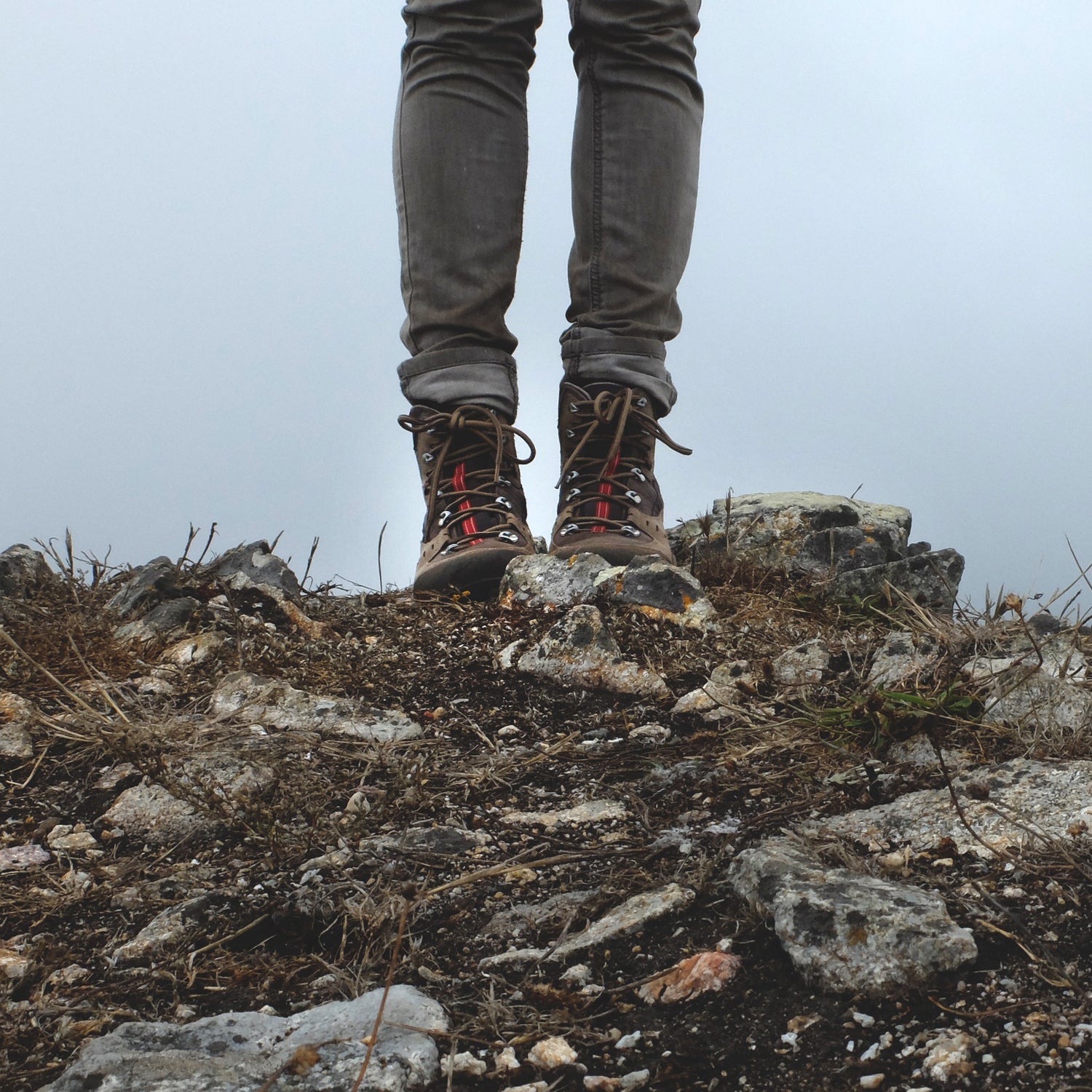It’s easy to get confused by terms like “arch support,” and “torsional rigidity” when you buy your first hikers. So we put together this simple buying guide with the help of Dr. Paul Langer, president of the and author of . Here are his seven top tips for ensuring you walk out of the store with a pair that won't cause you agony.
1. Comfort Is Key
“The best research on footwear of any kind always points to the importance of comfort,” Dr. Langer says. Forget the brand, price, built-in tech, and everything else. If the boots don’t feel good, don’t buy 'em. This also means you shouldn't buy a pair of hikers without trying them on in the store first. Fun fact: scientists have proven that people when they exercise in comfy shoes.
2. Walk Around
“Put [the boot] on your foot, move around in it to gauge your comfort,” Dr. Langer says. The walking bit's key, because while the boots might feel good when you’re sitting, they might be excruciating after a few steps. And don’t rush the walking either. Stroll around the store, use the stone-like ramps at places like REI, go outside. In short, you want to come away from this mini test with a real sense for how the boots feel. Your feet will thank you later.
3. Play the Field
Dr. Langer warns that most hiking boots will be relatively comfy compared to your everyday shoes, thanks to all the padding in the midsole and uppper. But don’t buy the first pair you try. Put at least half a dozen on your feet so you get a sense for different brands and models. Know your options before you buy.
4. Ask Your Local Retail Expert
There are a lot of good boots out there, and a good retail employee can help narrow down your choices. Tell them what you’re looking for (think a light hiker or something beefier with plenty of ankle support) and where you want to go, and they’ll point you in the right direction. “Someone who is a good listener and knows the footwear will show you things you might like, but won’t tell you what to get,” Dr. Langer says.
5. Trust Your Gut
You can talk to retail employees, or read the �����ԹϺ��� Buyer’s Guide for basic advice, but remember, you have to make the final decision. Don’t buy a boot just because it lands on the cover of a magazine, or gets recommended by someone in a green vest. Buy a boot because it fits and is made for the type of hiking you want to do. “You are the expert,” Dr. Langer says.
6. Consider After-Market Insoles
Dr. Langer treats patients with a variety of what he calls, “windows of comfort.” Some people have a wide “comfort window” and can use just about any shoe. Other people are much more particular. If you have a picky foot, try a set of insoles. Brands like Superfeet make a variety of models designed to increasee comfort and support that you can buy off the shelf.
7. Running Shoes Are Also an Option
If you can’t find the right boot, look at running shoes. “If you find a more flexible shoe more comfortable, then get it,” Dr. Langer says. Running shoes don’t provide ankle support, and they’re not made for carrying heavy packs, but they’re usually more comfy and just fine for short day hikes. Tip: there are just as many running shoes as there are hiking books, and the technology they use is varied (different soles, different heel-toe drops, etc.), so make sure to try on several pairs of these as well.


